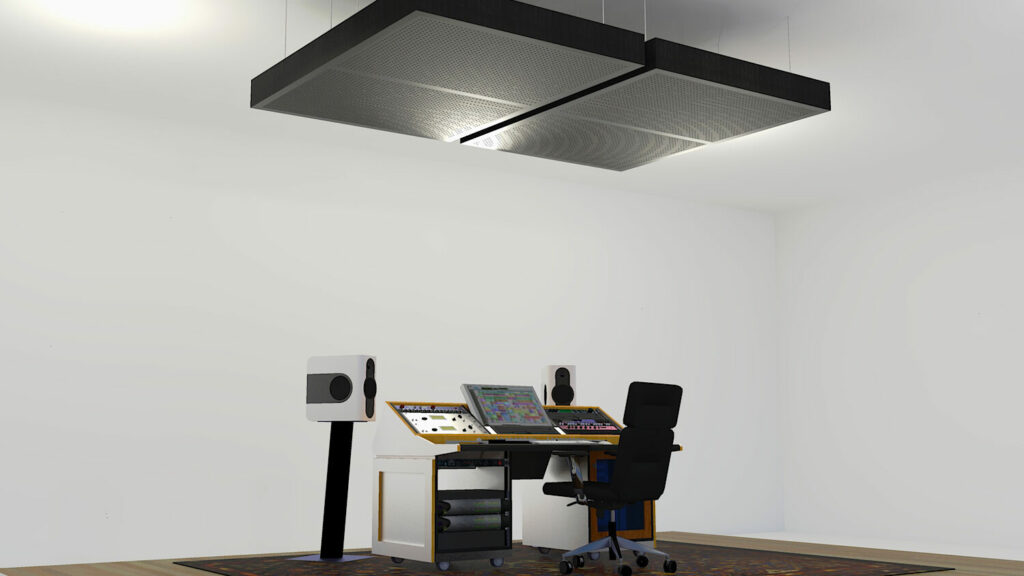
Table of Contents
Introduction
There is no such thing as a soundproof foam panel. Foam is not a noise (barrier) technology. Foam is an absorption technology for middle and high frequency energy. Nothing about the term soundproof foam panel makes sense. First, there is no such thing as soundproof. Nothing with noise is ever “proofed”. Noise is managed not eliminated.
The noise process is termed noise transmission. Noise moves from a noise source to a receiver person. You can not use any panel to mitigate noise. No soundproof foam panel or panel of any material type will stop noise transmission. Stopping noise transmission is a permanent construction solution with new room walls, floor, and ceiling surface areas that are built. No wall hanging panel will mitigate noise. There is no such thing as a soundproof foam panel.
Let’s examine how to measure our noise issues so we can speak intelligently about the noise transmission issue. There is no panel period that you can hang that will reduce noise transmission. Soundproof foam panel is more marketing speak than physics. Panels are for sound absorption inside the room. They treat the energy that is in the room, not the energy trying to get in.
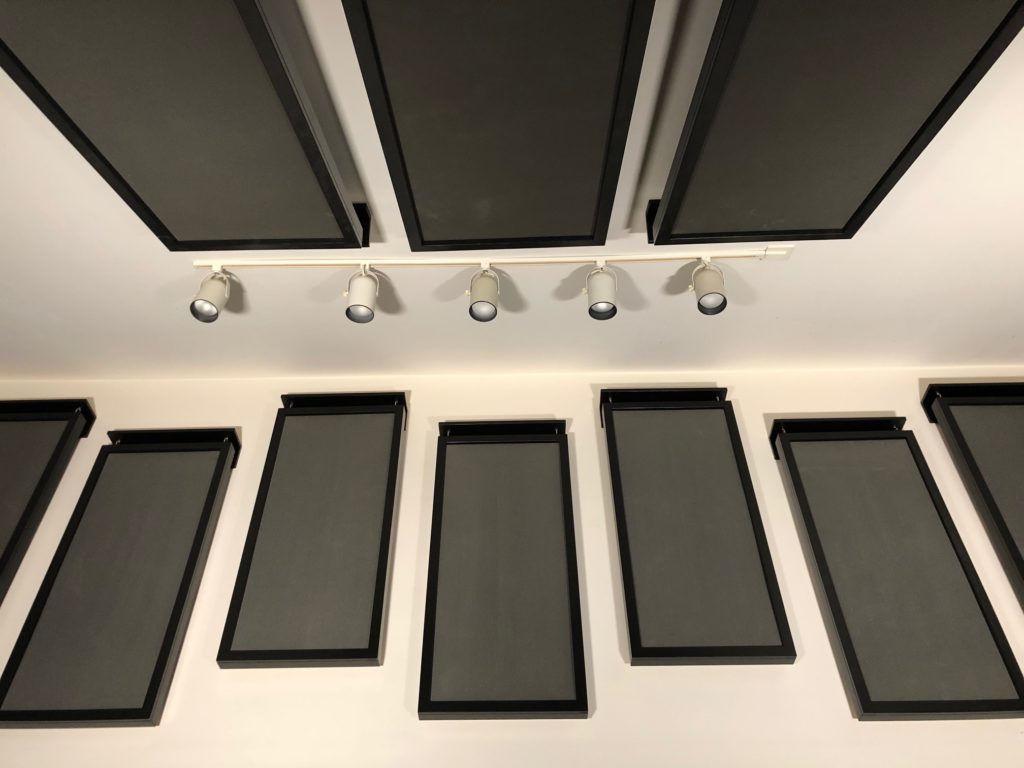
Effective Noise Barrier: Physics & Measurements
Noise is like water. It will find the weakest section of any structure and go through it. Think of stopping noise like building a boat that you will place within the ocean. It must do two things very well. It must be strong to withstand the waves of water (noise) striking it. It must also be water (noise) tight so it does not take on water. Our room or boat must be strong and tight on all surfaces including the floor, ceiling, and four walls.
Once you understand these requirements, you can readily see that the term soundproof foam panel is nonsense when run through our current laws of physics filter. All noise numbers must be measured since every material type you use in the barrier wall to stop it is specific to certain noise frequency ranges. Not all materials work for all noise situations. Noise must be quantified and qualified through measurement.
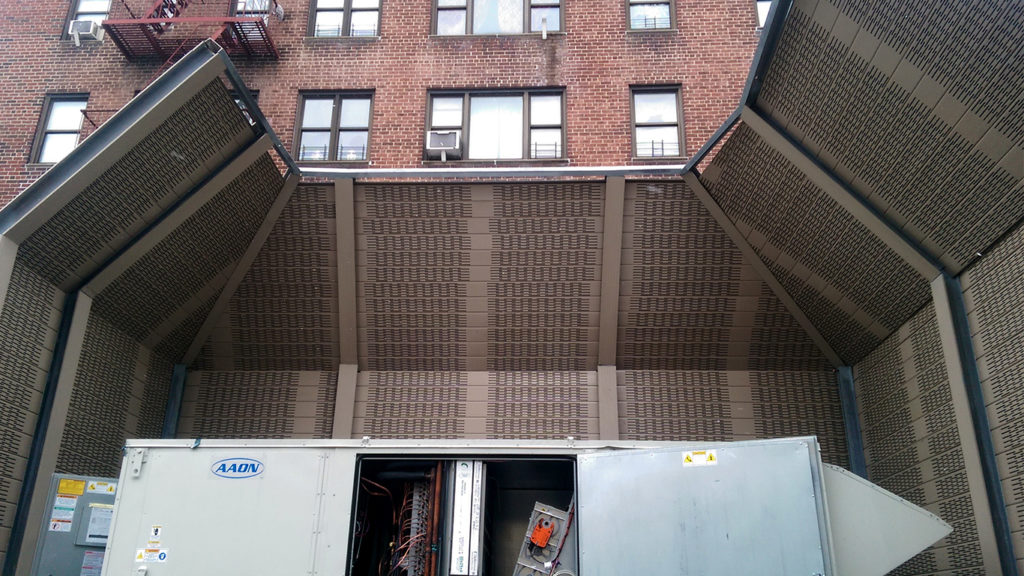
Effective Noise Solutions: Measure, Analyze, Design
Noise transmission issues must be qualified and quantified. All noise issues must be measured over a seven day time period. We must develop a map of the noise levels on each and everyday that the room will be used. We will be looking at the frequency and amplitude of the noise during the quietest part of each day and the loudest part of each day. This will produce minimums and maximums of pressure through the complete week.
With a full week of numbers, we will be able to design for the noisiest day so you can use the room no matter what day you want to. At Acoustic Fields, we have a noise measurement process that you can use with your phone. You download our apps and follow our noise measurement instructions. You record the data into our online data sheet and send it to us. We analyze your noise data and then send you a drawing of the barrier structure you will need to build to stop your specific noise issues.
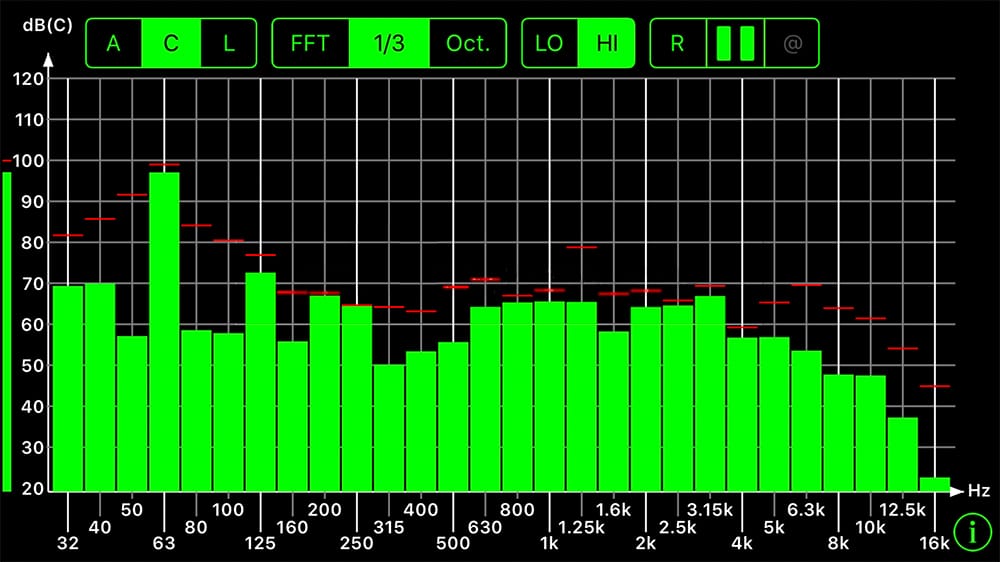
Key Factors in Noise Transmission: Frequency, Amplitude, Material
Lower frequency noise can transmit through 16″ of concrete. With noise issues that fall below 125 hz. the barrier that you must build will be 2-3 times more massive than if your noise issues lie above 125 hz. Not only is the frequency of each noise important, the strength or amplitude of each frequency needs to be also taken into consideration. The frequency of your noise is treated with a certain material type. The amplitude or strength of each noise frequency is treated with the thickness or density of each material type.
The way the materials that are chosen are arranged within the barrier is also critical. With lower frequency external noise sources, it is best to start with a higher density material type facing the noise source. Many variables need to be considered. This is why you must measure. Think, measure it twice, cut once. With noise issues, you do not want to spend one dollar more than you have to since barriers are a permanent construction technique that stays with the property and no appraiser will give you extra appraised value for a quiet room.
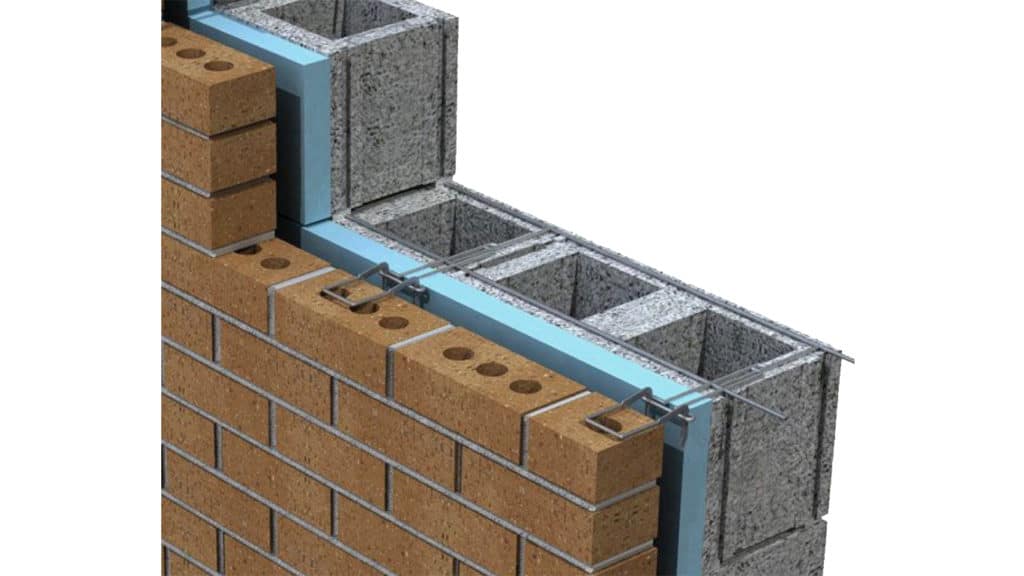
Measure for Effective Solutions to Noise Issues: Avoid Guesswork
Guessing with any noise issue is foolish. We receive calls everyday from people who read this or that and did this or that thinking that what they were reading pertained to their situation. This is never the case. No two noise situations are ever the same. When what they built does not work, they call me. Most of the time I tell them that in order to fix your problem we must demo what you have done and start over. I have never met anyone who enjoys hearing that in 50 years. Noise is complicated and expensive to treat.
We build professional recording studios along with critical listening rooms and noise is our enemy also. Noise issues can destroy budgets. It can sometimes exceed 4-5 times the cost to manage the energy issues with the room with sound absorption and sound diffusion technologies. Noise is any project must be addressed first and foremost. The noise numbers must be taken and the appropriate barre design calculated and placed with the budget.








The discussion on ductwork noise transmission from Acoustic Fields highlights crucial aspects of HVAC system acoustics. The movement of air…
Great build plans. thank you Denis
You must use absorption. Never place a chair against a wall.
A friend and I built several diffusors using these plans and they turned out absolutely beautiful. Very good instructions and…